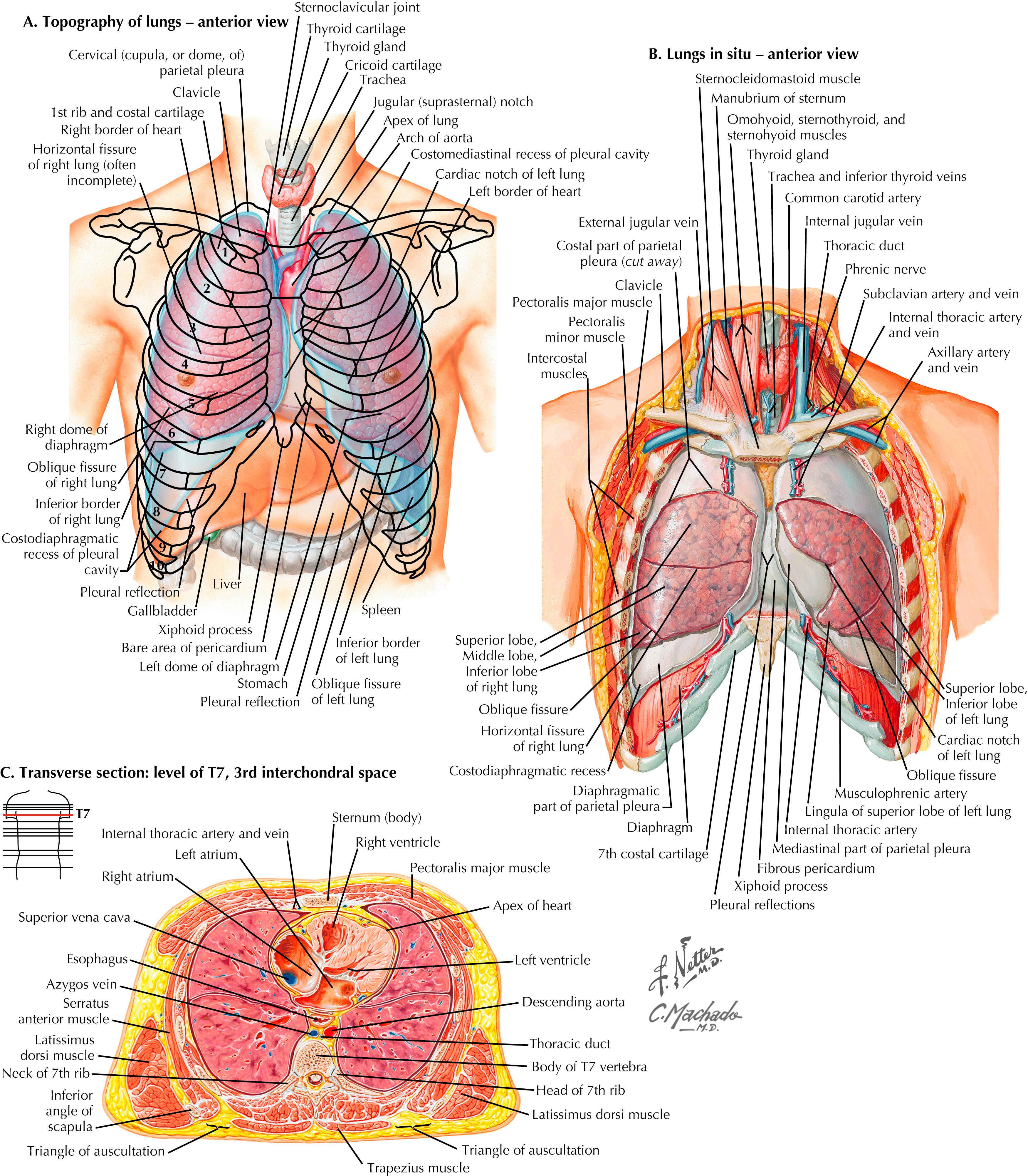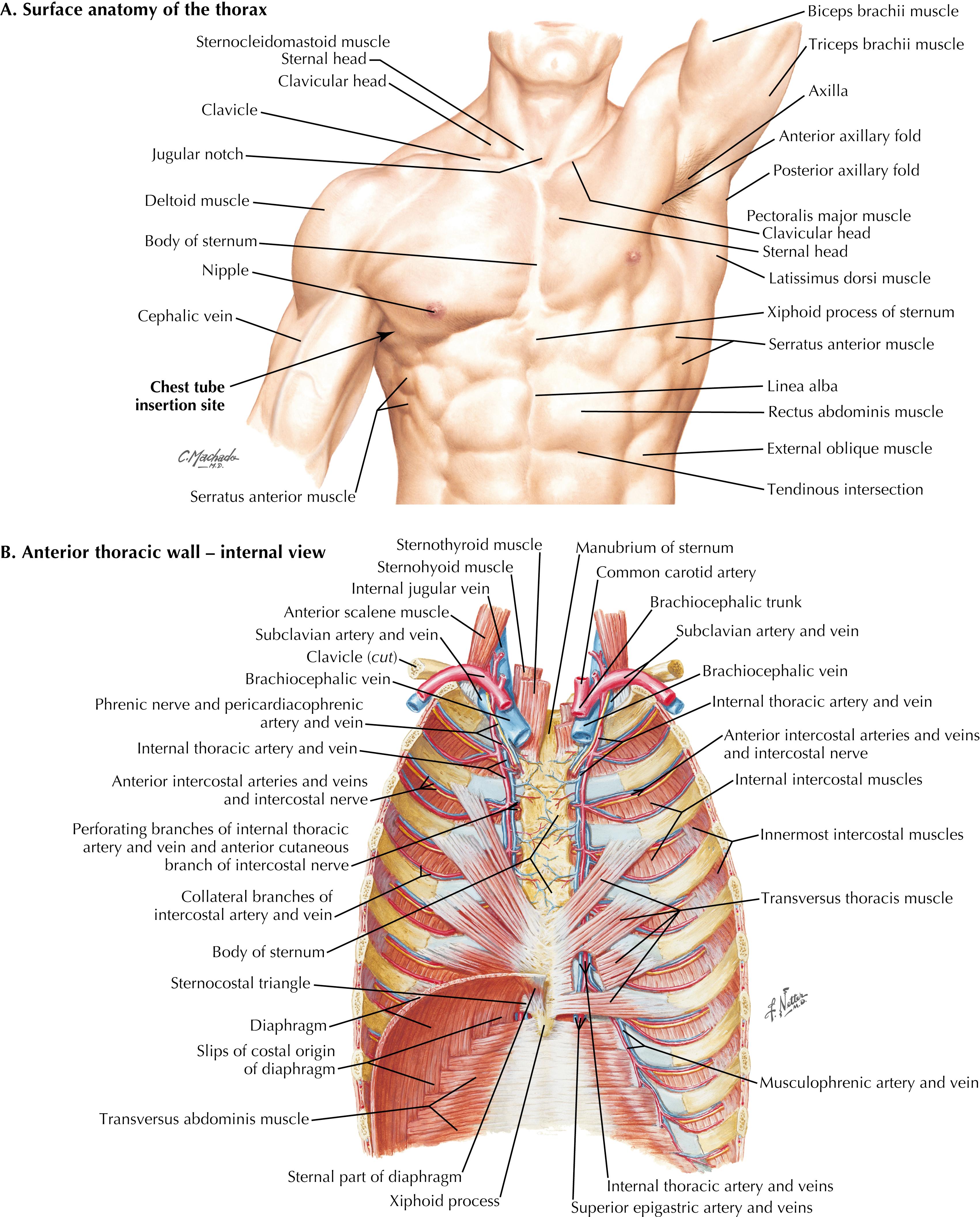Physical Address
304 North Cardinal St.
Dorchester Center, MA 02124
Chest tube placement may be a lifesaving maneuver. Chest tubes are generally inserted for pneumothorax, hemothorax, hemopneumothorax, empyema, chylothorax, bronchopleural fistula, and pleural effusion. Although there are no absolute contraindications to placement, caution is advised when considering placement in patients with coagulopathy or those who may be on antiplatelet agents or other anticoagulants. They are placed in emergent and nonemergent clinical situations, and depending on the indication and urgency, the technique may vary slightly. Understanding thoracic anatomy and key landmarks can aid in safe and efficient chest tube insertion.
The chest wall comprises multiple layers, which include the skin, subcutaneous tissue, intercostal muscles, and parietal pleura ( Figs. 50.1 and 50.2 ). Placing a tube requires traversing these structures.


The key landmarks are the clavicular head; midclavicular line; the anterior, middle, and posterior axillary lines; and intercostal spaces with corresponding ribs. The anterior border of the latissimus dorsi, the lateral border of the pectoralis major, and a line superior to the horizontal level of the nipple has been described as the “triangle of safety” in chest tube placement. Ideal placement in most situations is the fourth/fifth intercostal space. Identifying this rib space is essential to proper insertion of a chest tube. In a male patient, the lower border of the pectoralis major muscle may be used as a landmark to identify the fourth/fifth rib space; however, in a female patient, the nipple should not be used as a landmark. Instead, the inframammary fold should be used to identify the fifth rib at the anterior axillary line. Failure to recognize these boundaries can result in complications such as placing a tube into or below the diaphragm, which can result in bleeding or injury to intra-abdominal or major vascular structures (see Fig. 50.1A ).
The intercostal neurovascular bundle lies just below the inferior portion of the rib (see Fig. 50.2B ). It is important to place the chest tube over the most superior portion of the rib to avoid injuring the intercostal neurovascular bundle. Recognizing the location of these important structures is a key concept in placement.
Misguided tube placement can also be avoided by understanding the differences between the left and right chest cavities (see Fig. 50.1B ). The right lung is trilobar and the left is bilobar. The location of the horizontal fissure on the right and oblique fissure on the left is at approximately the fourth rib at the anterior axillary line. Staying below this rib can help avoid inadvertent placement of the tube within a fissure.
Become a Clinical Tree membership for Full access and enjoy Unlimited articles
If you are a member. Log in here